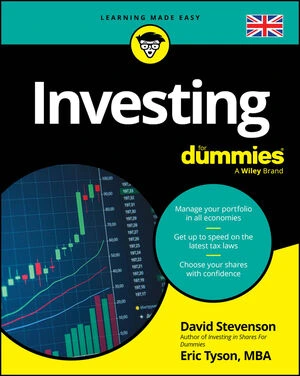Many smaller companies rely on banks to lend them money, but growing and successful firms have other options, too, in the financial markets. Companies can choose between two major money-raising options when they go into the financial markets: issuing stocks and issuing bonds.
Deciding whether to issue stocks or bonds
A world of difference exists between the two major types of securities, both from the perspective of the investor and from that of the issuing company:- Bonds are loans that a company must pay back. Instead of borrowing money from a bank, many companies elect to sell bonds, which are IOUs to investors. The primary disadvantage of issuing bonds compared with issuing stock, from a company’s perspective, is that the company must repay this money with interest. On the other hand, the business doesn’t have to relinquish ownership when it borrows money. Companies are also more likely to issue bonds if the stock market is depressed, meaning that companies can’t fetch as much for their stock.
- Stocks are shares of ownership in a company. Some companies choose to issue stock to raise money. Unlike bonds, the money that the company raises through a stock offering isn’t paid back because it’s not a loan. When the investing public buys stock, these outside investors continue to hold and trade it. (Although companies occasionally buy their own stock back, usually because they think it’s a good investment, they’re under no obligation to do so.)
Issuing stock allows a company’s founders and owners to sell some of their relatively illiquid private stock and reap the rewards of their successful company. Many growing companies also favor stock offerings because they don’t want the cash drain that comes from paying loans (bonds) back.
Although many company owners like to take their companies public (issuing stock) to cash in on their stake of the company, not all owners want to go public, and not all who do go public are happy that they did. One of the numerous drawbacks of establishing your company as public includes the burdensome financial reporting requirements, such as publishing quarterly earnings statements and annual reports.
Not only do these documents take lots of time and money to produce, but they can also reveal competitive secrets. Some companies also harm their long-term planning ability because of the pressure and focus on short-term corporate performance that comes with being a public company.
Ultimately, companies seek to raise capital in the lowest-cost way they can, so they elect to sell stocks or bonds based on what the finance folks tell them is the best option. For example, if the stock market is booming and new stock can sell at a premium price, companies opt to sell more stock. Also, some companies prefer to avoid debt because they don’t like carrying it.From your perspective as a potential investor, you can usually make more money in stocks than bonds, but stocks are generally more volatile in the short term.
Taking a company public: Understanding IPOs
Suppose that The Capitalist Company (TCC) wants to issue stock for the first time, which is called an initial public offering (IPO). If TCC decides to go public, the company’s management team works with investment bankers, who help companies decide when and at what price to sell stock and then help sell (distribute) the new shares to investors willing to purchase them.Now suppose that based on their analysis of the value of TCC, the investment bankers believe that TCC can raise $20 million by issuing stock that represents a particular portion of the company. When a company issues stock, the price per share that the stock is sold for is somewhat arbitrary.
The amount that a prospective investor will pay for a particular portion of the company’s stock should depend on the company’s profits and future growth prospects. Companies that produce higher levels of profits and grow faster can generally command a higher sales price for a given portion of the company.
Consider the following ways that investment bankers can structure the IPO for TCC:
| Price of Stock | Number of Shares Issued |
| $5 | 4 million shares |
| $10 | 2 million shares |
| $20 | 1 million shares |
A stock’s price per share by itself is meaningless in evaluating whether to buy a stock. Ultimately, the amount that investors will pay for a company’s stock should depend greatly on the company’s growth and profitability prospects. To determine the price-earnings ratio of a particular company’s stock, you take the price per share of the company’s stock and divide it by the company’s earnings per share.
In the case of TCC, suppose its stock is currently valued in the marketplace at $30 per share and it earned $2 per share in the past year, which produces a price-earnings ratio of 15.





